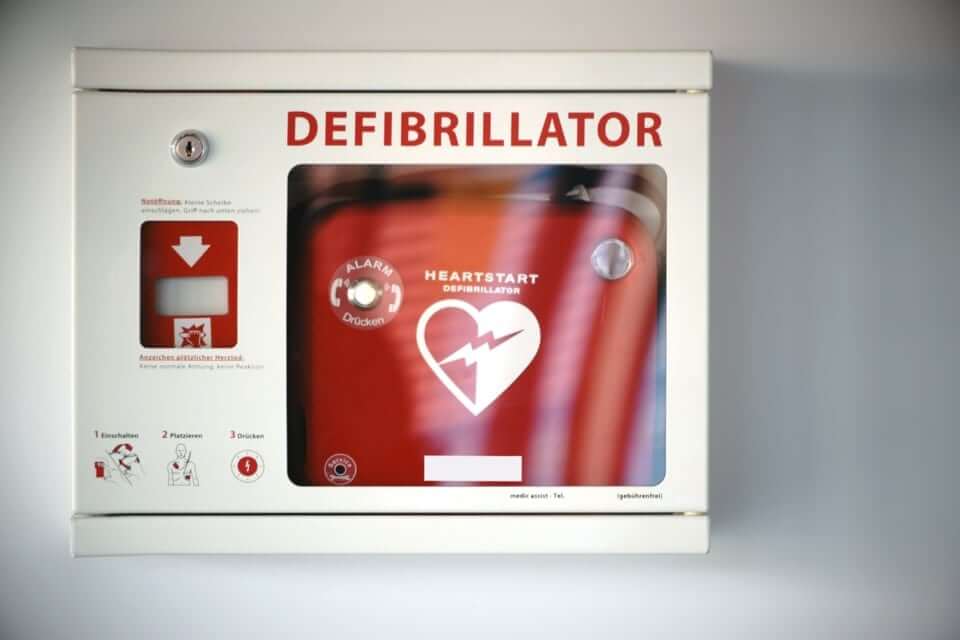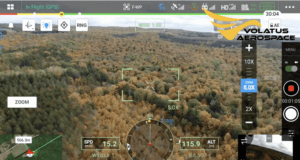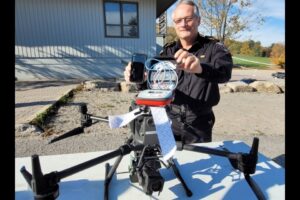COUNTY OF SIMCOE PARAMEDICS EXPLORING DRONES, OTHER OPTIONS TO REACH CARDIAC ARREST PATIENTS FASTER
REGION’S GEOGRAPHY AND POPULATION DISTRIBUTION CREATES CHALLENGES FOR RESPONDERS
Ian MacLennanPublished: Sep 29th, 2021 1:31pmLast Updated: Sep 29th, 2021 1:43pmFacebookTwitter
Chances of surviving a cardiac arrest drop by 7 to 10 per cent with each passing minute without cardiopulmonary resuscitation (CPR) and defibrillation.
According to a report to Simcoe County Council committee of the whole this week, Simcoe County’s geography and population distribution create challenges for responders to arrive to make a difference. County of Simcoe paramedic services (CSPS) provided an update on what avenues are being explored to improve response times.
“We wanted to identify what are the areas that have shown historically to indicate long response times for cardiac patients, and maybe we can target them with different approaches to increase the survival of people that have cardiac arrest episodes in those areas,” says Andrew Robert, Director and Chief of County of Simcoe Paramedic Services.
Robert says the pandemic has impacted the CSPS ability to expand and grow community-based training and distribution of public access defibrillators (PAD).
“We have approximately 700 of those defibrillators in the communities,” says Robert.
Program proposed for Simcoe County could have drones fly defibrillators to emergency scenes
As part of newly enhanced cardiac arrest response strategy, the County of Simcoe working with drone company for permissions to fly life-saving equipment to emergency scenes Sep 28, 2021 5:00 PM By: Jessica Owen
It’s a bird! It’s a plane!
It’s a drone delivering life-saving equipment during an emergency in Simcoe County.
Cutting-edge technology could be coming to Simcoe County municipalities to help aid in improving paramedic response times, according to a report considered by county council at their Sept. 28 meeting.
The report outlines the development of a newly enhanced cardiac arrest response strategy being undertaken by County of Simcoe Paramedic Services, which would see on-call volunteers trained in First-Aid techniques and drones being used to deliver defibrillators, EpiPens or Naloxone in emergency situations.
“Simcoe County’s geography and population distribution create challenges for responders to arrive in time to make a difference,” noted County of Simcoe Paramedic Chief Andrew Robert in his report to council. “Even with strategic placement and use of existing emergency response resources across our region, an engaged community, ready and able to assist with (CPR) and defibrillation along with the use of advanced technology, represent significant opportunities to increase the chances of survival.”
There are three main opportunities that are being developed as part of the new strategy.
First, training on how to use a defibrillator and perform First Aid is planned to be expanded county-wide in places such as schools.
Second, a new community responder program is being proposed. Community responders would be alerted through the use of a smartphone app of a potential cardiac arrest near them. Community responders could include existing members of the first-response community or healthcare workers.
“In rural or remote areas, these responders may represent the closest and quickest available help to someone in need,” noted Robert.
Barrie Coun. Ann-Marie Kungl asked if retired first responders or healthcare workers would be eligible to volunteer with the Community responder program.
“I don’t think anything is out of scope at this point in time. Since everything is very preliminary, we certainly can look at both,” said Jane Sinclair, general manager of health and emergency services.
The last opportunity is using drones to deliver resources such as defibrillators, EpiPens, or Naloxone to identified areas based on a 911 call.
Once a call is categorized and geo-located by the ambulance dispatch center, a drone would be immediately launched to deliver resources to a call location. When the drone makes a delivery, two-way communication with a paramedic can be established to coach those on-scene on the use of the equipment.
The report says Volatus is working with Transport Canada to shape flight regulations to support the approach.
Bradford West Gwillimbury Deputy Mayor James Leduc asked if the county would be sharing a patent on the technology with Volatus.
“I see this program as being an absolute benefit to everybody throughout Canada, Ontario and Simcoe County,” said Leduc.
Sinclair said it was very early stages in the process and the county and Volatus still need certain approvals before operating the program.
“We will bring back more information in a future report regarding potential opportunities. I think the intent is to trial, seek approvals and then to incorporate those as part of our emergency response program going forward,” said Sinclair.







